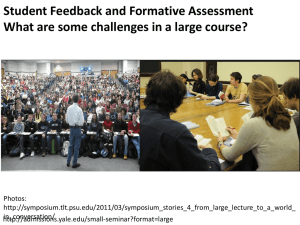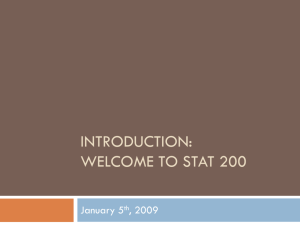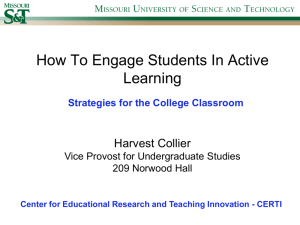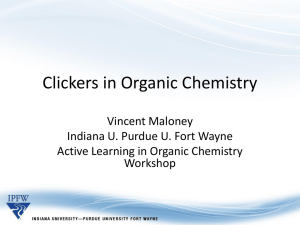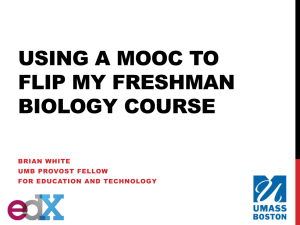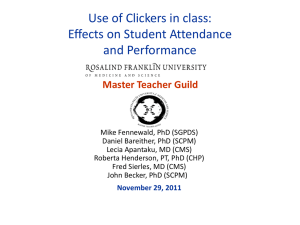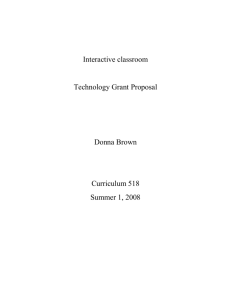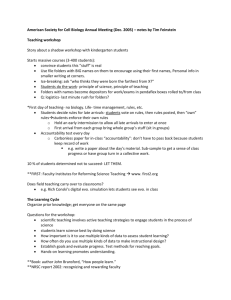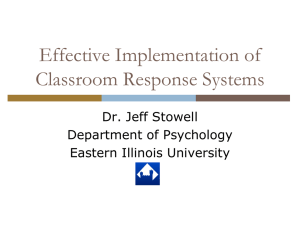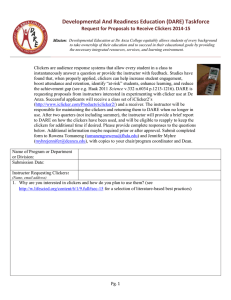Dr. Bill Reay, Professor Emeritus Physics Ohio State University Dr
advertisement
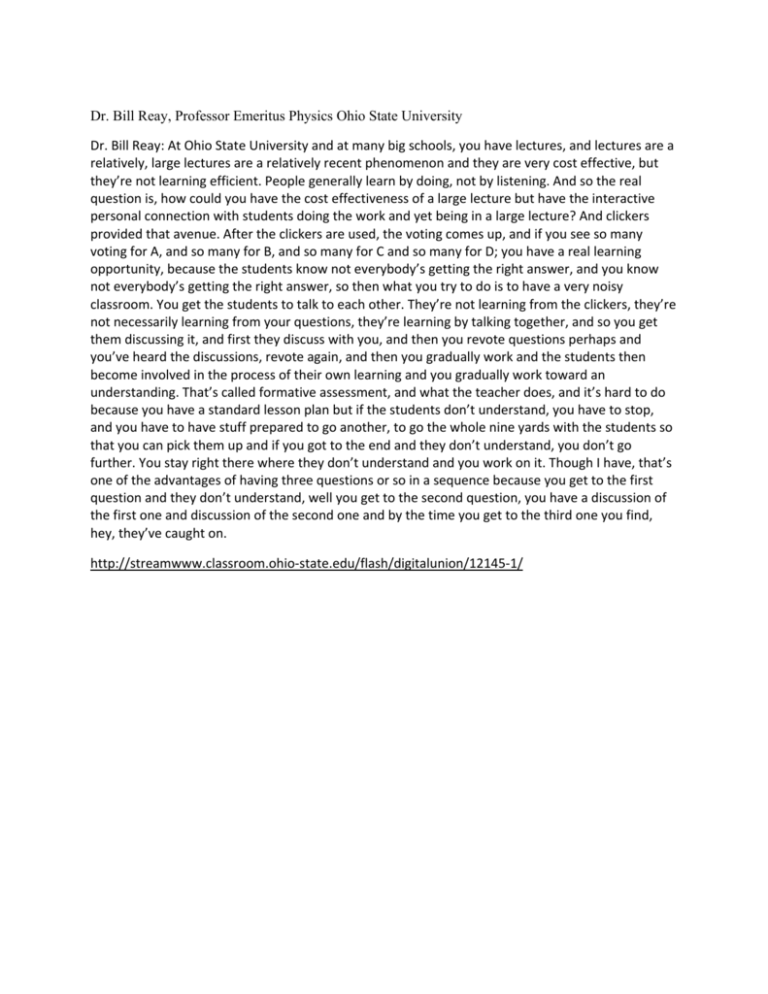
Dr. Bill Reay, Professor Emeritus Physics Ohio State University Dr. Bill Reay: At Ohio State University and at many big schools, you have lectures, and lectures are a relatively, large lectures are a relatively recent phenomenon and they are very cost effective, but they’re not learning efficient. People generally learn by doing, not by listening. And so the real question is, how could you have the cost effectiveness of a large lecture but have the interactive personal connection with students doing the work and yet being in a large lecture? And clickers provided that avenue. After the clickers are used, the voting comes up, and if you see so many voting for A, and so many for B, and so many for C and so many for D; you have a real learning opportunity, because the students know not everybody’s getting the right answer, and you know not everybody’s getting the right answer, so then what you try to do is to have a very noisy classroom. You get the students to talk to each other. They’re not learning from the clickers, they’re not necessarily learning from your questions, they’re learning by talking together, and so you get them discussing it, and first they discuss with you, and then you revote questions perhaps and you’ve heard the discussions, revote again, and then you gradually work and the students then become involved in the process of their own learning and you gradually work toward an understanding. That’s called formative assessment, and what the teacher does, and it’s hard to do because you have a standard lesson plan but if the students don’t understand, you have to stop, and you have to have stuff prepared to go another, to go the whole nine yards with the students so that you can pick them up and if you got to the end and they don’t understand, you don’t go further. You stay right there where they don’t understand and you work on it. Though I have, that’s one of the advantages of having three questions or so in a sequence because you get to the first question and they don’t understand, well you get to the second question, you have a discussion of the first one and discussion of the second one and by the time you get to the third one you find, hey, they’ve caught on. http://streamwww.classroom.ohio-state.edu/flash/digitalunion/12145-1/
